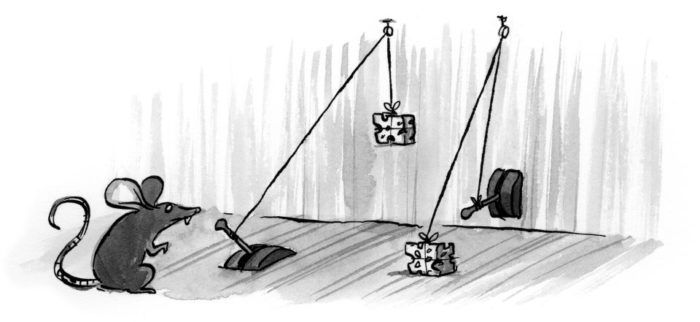
This reality is no different for websites and other digital properties. Persuasion is a necessary component of good design, ensuring that users will engage with your product in the way you intended, leading to the outcome you intended.
Understanding persuasion will highlight the importance of developing strong messages, help you better incorporate and refine effective persuasive techniques into your design, and allow you to explain to others (potential clients, peers) how and why your design is effective at persuading users.
The really nice elephant in the room
Persuasion has a bad reputation-the word itself often evokes thoughts of being swindled or pressured to do something we really don’t want to do. But persuasion isn’t inherently negative-it’s just a process of influence, for better or worse. With some help from Richard Perloff’s The Dynamics of Persuasion, here are five ways of understanding persuasion:
Persuasion is communication. At its core, persuasion needs a strong, clear message sent from one party to another.
Persuasion is an attempt to influence. Understanding your audience and what makes them tick makes your attempt more likely to succeed-though the outcome is never guaranteed.
Persuasion involves more than words. Aesthetics, interactions, ease of use, and other factors can make a website or application more persuasive to potential users.
Persuasion is not coercion. It is up to individuals to form or change their own attitudes. Utilizing dark patterns or purposely tricking a user into doing something they wouldn’t otherwise do is not persuasion. It’s being an asshole.
Persuasion can reinforce attitudes. Your audience has opinions that need to be strengthened from time to time. If you don’t preach to the choir, someone else will, and eventually your faithful followers will be led astray.
Academics have attempted to explain how persuasion works on individuals for decades. The Elaboration Likelihood Model (Petty and Cacioppo, 1986), one of the most frequently cited models of persuasion, explains how shaping attitudes also shapes behaviors. Incorporating the principles of the Elaboration Likelihood Model into your messages and design will maximize your influence on user attitudes and, therefore, behaviors. That, my friend, is what persuasion is all about.
The Elaboration Likelihood Model
The Elaboration Likelihood Model attempts to explain how attitudes are shaped, formed, and reinforced by persuasive arguments. The basic idea is that when someone is presented with information, some level of “elaboration” occurs. Elaboration, in this context, means the effort someone makes to evaluate, remember, and accept (or reject) a message.
The model suggests that people express either high or low elaboration (that is, their level of effort) when they encounter a persuasive message. The level of elaboration then determines which processing route the message takes: central or peripheral.


























Log in or create an account to post a comment.
Sign up Log in